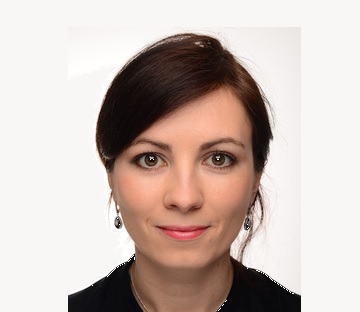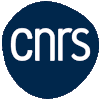 On Monday February 17th 2024, we have the pleasure to welcome in SPINTEC Anna Semisalova from Univ. Duisburg-Essen. She will give us a seminar at 14:00 entitled :
On Monday February 17th 2024, we have the pleasure to welcome in SPINTEC Anna Semisalova from Univ. Duisburg-Essen. She will give us a seminar at 14:00 entitled :
Transfer of angular momentum and effects of inertia of magnetization in spin dynamics
Place : IRIG/SPINTEC, auditorium 445 CEA Building 10.05 (presential access to the conference room at CEA in Grenoble requires an entry authorization. Request it before 7th at admin.spintec@cea.fr)
video conference : https://univ-grenoble-alpes-fr.zoom.us/j/98769867024
Meeting ID: 987 6986 7024
Passcode: 025918
Abstract : Transfer of angular momentum and effects of inertia of magnetization in spin dynamics
The interaction of magnetic moments with various excitations is the foundation of spintronics – the energy-saving “electronics” based on spin manipulation, and its sub-field magnonics which is based on the coupling of microwave photons to quanta of magnetic excitations (spin waves). The control and transfer of spin angular momentum plays an important role in many future spintronic applications based for example on a spin-transfer torque and spin-to-charge interconversion. In magnetic bilayers, the transfer of angular momentum to an adjacent paramagnetic material can be controlled by the resonant precession of magnetization (typically at GHz frequencies) leading to a propagation of spin – not charge – current across the interface.
In my talk, I will discuss concepts of interface design for “spin pumping” based on epitaxial bilayers [1] and binary alloys with a magnetostructural transition [2,3] which can be switched from a paramagnetic to ferromagnetic state by inducing chemical disorder [4]. Being able to turn the material to a spin source or a spin sink offers an additional degree of freedom for new broadband functionalities in magnetophotonics, quantum optics and magnonic networks, based on laterally patterned tailored nanostructures.
As high speed information processing with THz frequencies has moved into the focus of research, I will discuss the challenges and opportunities of the recently revisited inertial regime of magnetization [5,6] in the second part of my talk. The key idea is inspired by a conceptually new realization of nutation, an additional motion of magnetization that occurs on picosecond timescales [7] and can be used to generate sub-THz and THz magnons by GHz excitation. The manipulation of spin on this timescale opens a complimentary pathway to new ultrafast and energy-efficient technology for data processing. As a result of inertia, nutation of the magnetization vector with 10 to 1000 times higher speed is superimposed on the regular GHz-frequency precession [7]. I will discuss the recent findings and possible consequences in anisotropic ferromagnets [8] and in nanomagnets, and show how this unconventional excitation scheme might advance THz magnonics and elegantly surpass current speed limitations in spintronic devices.
- J. Wiemeler, A.C. Aktas, M. Farle, A. Semisalova, Appl. Phys. Lett. 124, 212404 (2024)
- M. Nord, A. Semisalova, A. Kakay, …, R. Bali, Small 15, 1904738 (2019)
- T. Schneider, K. Lenz, A. Semisalova, …, R. Bali, J. Appl. Phys. 125, 195302 (2019)
- T. Strusch, K. Lenz, R. Meckenstock, R. Bali, J. Ehrler, J. Lindner, J. Fassbender, M. Farle, K. Potzger, A. Semisalova, J. Appl. Phys. 132, 213906 (2022)
- M.-C. Ciornei, J.M. Rubi, J.-E. Wegrowe, Phys. Rev. B 83, 020410(R) (2011)
- K. Neeraj, N. Awari, S. Kovalev, … A. Semisalova, …, S. Bonetti, Nat. Phys. 17, 245 (2021)
- M. Cherkasskii, M. Farle, A. Semisalova, Phys. Rev. B 102, 184432 (2020)
- M. Cherkasskii, I. Barsukov, R. Mondal, M. Farle, A. Semisalova, Phys. Rev. B 106, 054428 (2022)
Biography : Anna Semisalova is a lecturer at the Faculty of Physics, University of Duisburg-Essen (UDE) since March 2019. She obtained her PhD in Physics from Lomonosov Moscow State University (MSU) in 2012 working on dilute magnetic semiconductors. After a postdoc time and assistant professorship (since 2013) at Lomonosov MSU when she worked on nanomagnetism and smart magnetic materials, she spent 4 years as a postdoctoral research fellow at the Institute of Ion Beam Physics and Materials Research, Helmholtz-Zentrum Dresden – Rossendorf (2015-2019) where she joined the research of the disorder-induced ferromagnetism in B2 materials (Fe60Al40, Fe50Rh50). Her current scientific activities at UDE include magnetization dynamics in thin films and nanostructures, thin film growth and nanofabrication using ion/laser irradiation, high frequency spin dynamics and magnetization inertial effects, magnon-photon interactions in 2D materials. She co-authored 2 patents, 70 publications and a book chapter (Springer Series in Materials Science).




